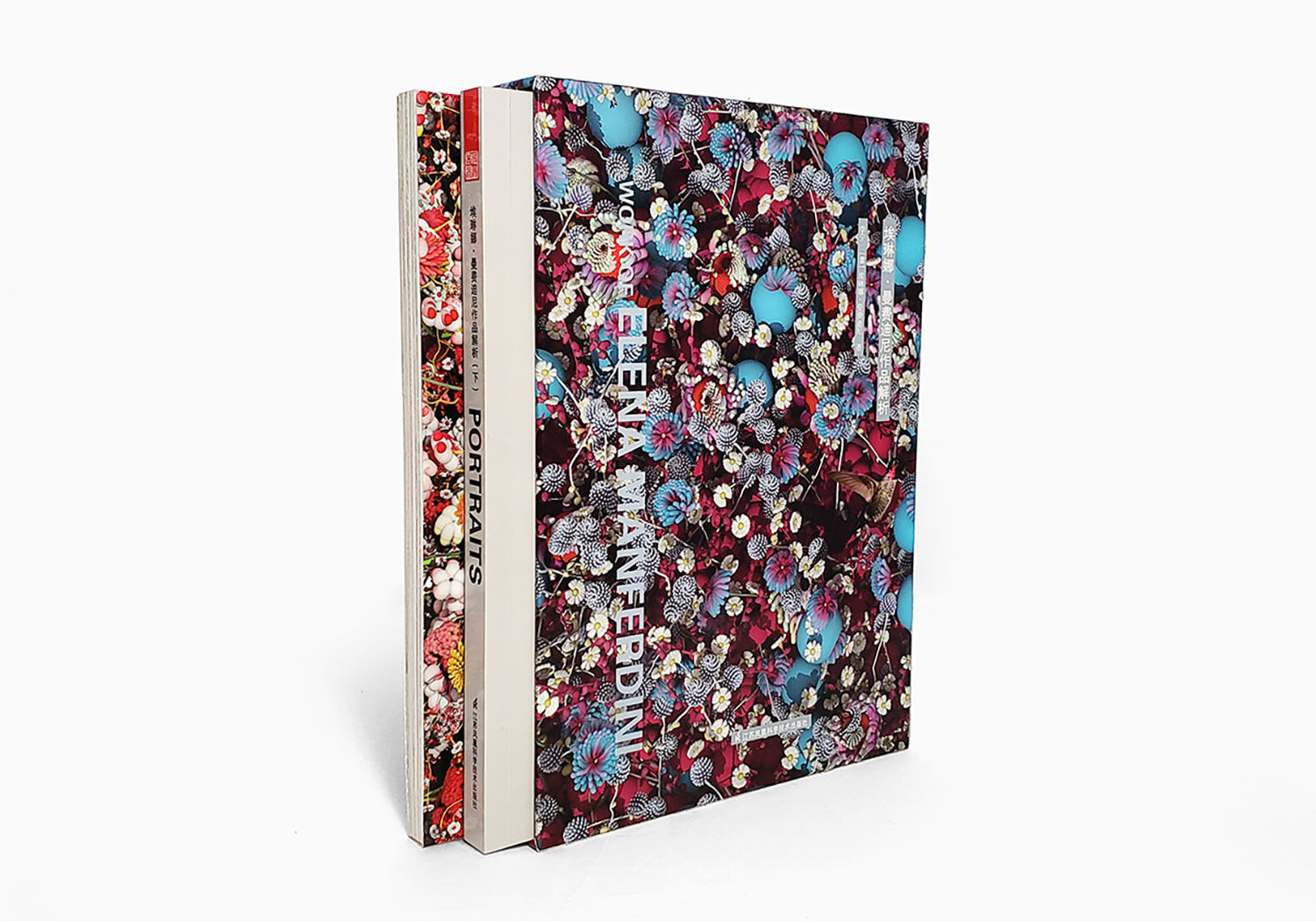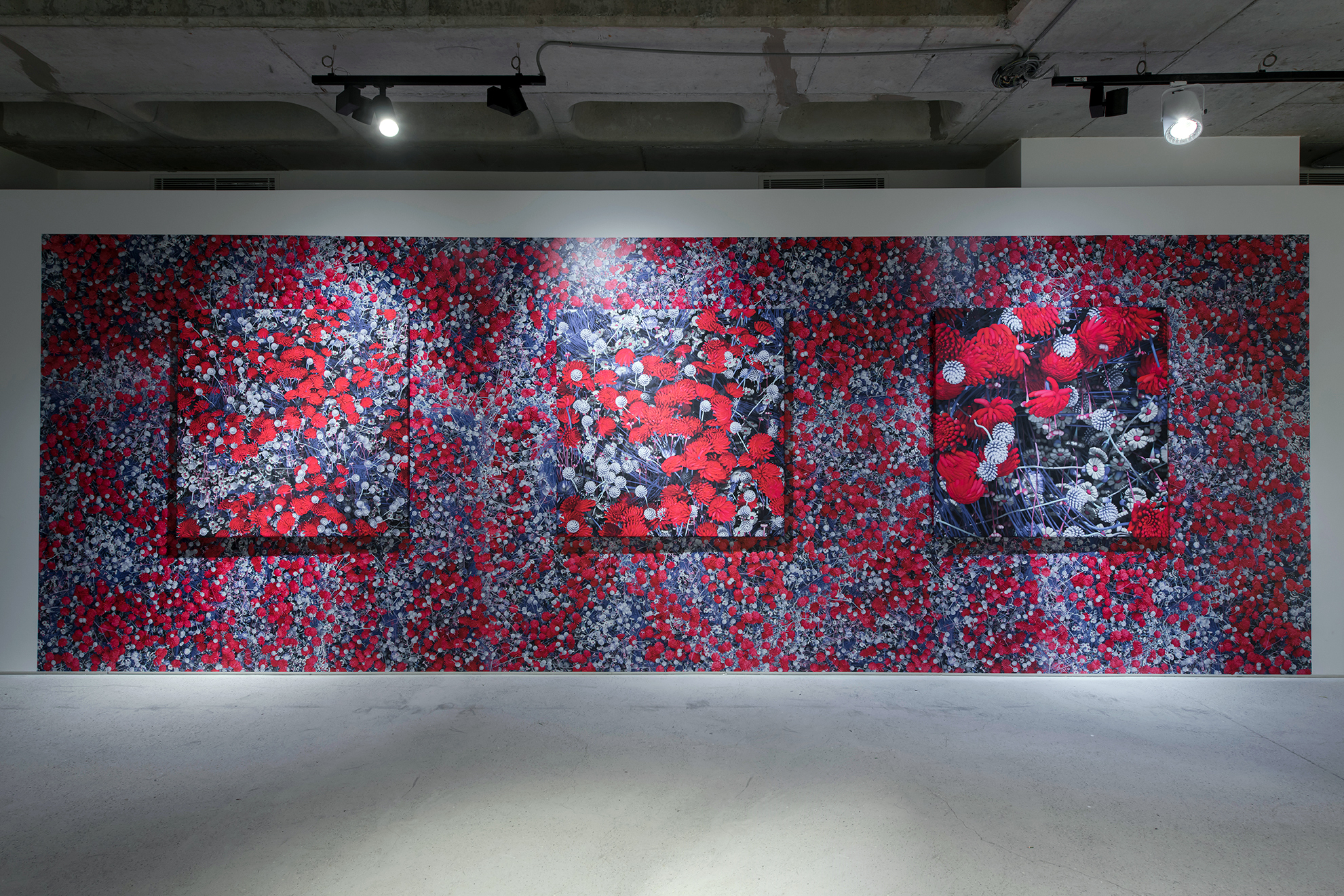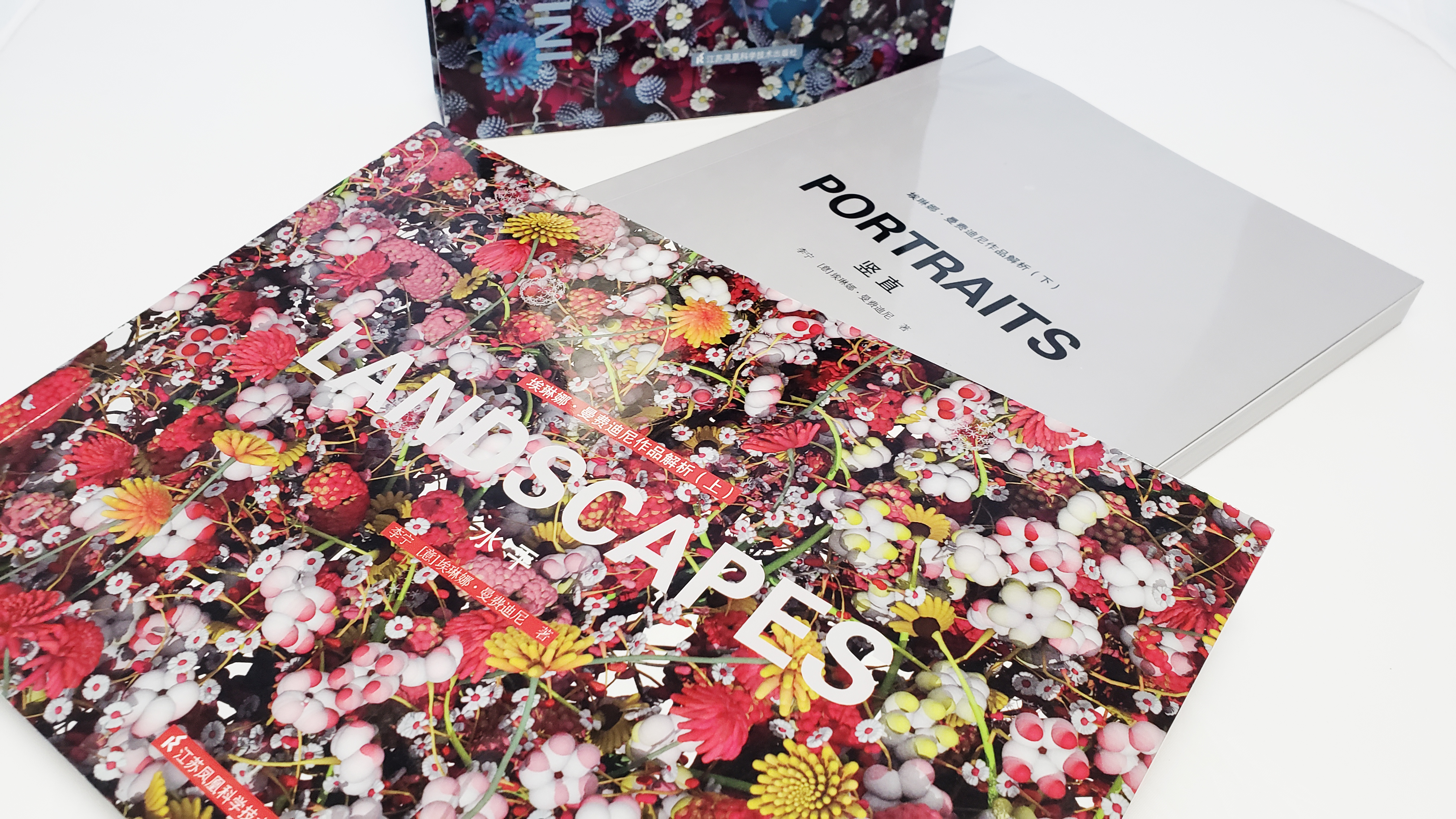Jasmine Benyamin and Elena Manferdini Convene on Portraits and Landscapes
SCI-Arc Graduate Programs Chair Elena Manferdini will celebrate the release of her monograph, entitled Portraits and Landscapes this Monday, March 9 at SCI-Arc’s Kappe Library. The monograph, split into two volumes, reflects upon multiple years’ worth of architectural and art projects completed by Manferdini and her firm, Atelier Manferdini. The following is a conversation between Manferdini and architectural theorist Jasmine Benyamin—who contributed an essay in the book—about the concepts and processes involved in the creation of Portraits and Landscapes.

Jasmine Benyamin: First of all, congratulations on the book. It's beautiful.
In the introduction, you make mention of the monograph as a type of publication. And yet, by calling this work a monograph, you actually intend to subvert the convention of the stand-alone coffee table catalog and propose a variant; one that holds its place as one of a myriad of accumulated artifacts documenting the practice of Atelier Manferdini. In other words it does not pretend to be comprehensive, but rather one of many curated snapshots.
In this context, what role does a book—this book—play in the constellation of other output you produce, whether it be apps, multimedia installations, exhibitions? What role does it play in your larger oeuvre?
Elena Manferdini: Out of a timeline including everything from juvenilia to recent work, I selected as a point of departure the end of the previous publication of Atelier Manferdini monograph on the firm’s work (Elena Manferdini, published in 2013 by Equalbooks).
What I ultimately came to realize when I was asked to put together a book is that the format of the comprehensive architecture monograph seemed potentially inappropriate, both for the time and also the kinds of work our office does. The idea emerged to work across multiple, different platforms: instead of a monograph, a series of publications on various media and portals.
The first time I published a monograph was about my first 10 years of work, and at the end I realized that doing so allowed me to move on to new work. A book is a place in time where ideas are crystallized. It remains almost as a postmortem of the work one has done, as well as provides the opportunity to change the work afterwards.
However, the way in which you organize a book is also a way to understand it; a monograph becomes a way to interpret the communication with an abstract audience. Discovering that thread that connects the projects is the beauty and also the difficulty in making a book in print—it’s merciless.
Putting together a book forces a moment of reflection. You find yourself stepping back and reassessing your work through a different filter, perhaps because you are now thinking of a reading audience. This is a task that is distinct from the contexts in which the projects were produced.
So maybe right now the work is a kind of retrospective, but as you said it is also productive and projective.
Absolutely. When you design a project, you don't necessarily think about it being published in a book. You think of the work through ideas, through means of representation, and then through the construction with the client. A publication is a format that you don't think of until you have a book to do.
I think it's healthy to make a book that is not a catalogue, but a lens through which you look at your ideas. It requires a coherence that sometimes is not in the work, but which you have to find and maybe even invent.

Shifting now to the titles and organization of the content, one of the fundamental distinctions you draw between the notion ‘portrait’ and ‘landscape’ lies in the assertion of a horizon line in the former and its dissolution in the latter. While Cartesian thinking is an artificial construct of the Renaissance, we have nonetheless become so accustomed to it that the absence of a horizon is extremely destabilizing.
Architecture too can take on both guises as an object to behold—one that frames and contains experience—but also as a nonlinear spatial narrative that produces new experiences. Can you elaborate on the differences between the two terms and your decision to split the volumes that way? I am particularly interested in your indexing of the ‘psyche’ as a kind of imaginative confrontation.
In the field of painting, whether you make a horizontal or a vertical painting, that orients the audience differently and imposes a way of seeing. When you think of a vertical painting, it tells you how to look at it: straight at the center, orienting your head at the top of the canvas and your feet at the bottom of the canvas. And it tells you a way to be in front of it. Whereas when you look at a horizontal canvas—and by that I mean larger horizontal landscapes—they are immersive and suggest a way of being in the world.
So the reason for the two volumes is that I wanted to communicate to the audience that there are two kinds of production in the work I do and they have different relationships to the audience. While the works in Portraits are mainly building façades, those in Landscapes are public artworks. Not only that, the subject matter of the two volumes is different. The vertical ones are usually abstract drawings, whereas horizontal ones are literal landscapes.
When I was looking through the projects, I started to evaluate them for their theatrical potential.
The portraits are perhaps more easily consumable as discrete artifacts. Whether as drawings on a wall or full-scale building façades, there is a clearly articulated space for the onlooker to occupy. The landscapes on the other hand appear to do away with any kind of pretense of a proscenium. The stage is gone. There is no longer a separation.
I agree with you; if the portraits are mainly building façades and you can imagine them being a miniature of reality, the landscapes really are a place of imagination. The landscape has that ability to create an intimate experience that one has with a public space.
In a way the challenge is a little bit greater for the landscapes to be documented because they elicit such an immersive response that it's harder to capture that when you're looking at it in a book form rather than at full scale.
I think you're correct, and this is one reason the landscape book comes with an app for smartphones; I felt that it needed that element of imagination. When you point a smartphone at the various landscapes on the page, you see them come to life on your screen. There is of course the issue of how the traditional medium of print can be augmented with the more contemporary quotidian medium of the phone.
The hope was to create active images. They ask the viewers to look. That literal subject matter is also strategic, meaning that it becomes digestible so that one would enter in full psychic contact with what the author wants the audience to feel.

The word beauty comes up a few times and it is such a loaded one. You could argue that it we cannot be indifferent to it. One always needs to take a position on it. And so what is beautiful to you about the work that's produced?
Clearly anybody that does work produces something that is in tune with her own aesthetic, but my sense is that beauty is also a strategic device. It allows for a privileged relationship with the audience. Most of the images printed in the book require an interactivity with the audience—either you see yourself in it or you have to engage with it. Beauty is a device to connect audience and artwork into this private conversation.
Another idea I had about these two ways of thinking about your work is that they both seem to illustrate the compulsive nature of your collecting. There is an addictive quality to collecting images. So whether it's a kind of collection of abstractions or a collection of figurations, there seems to be an archival sensibility; fragments from the world or lines and textures that get coalesced, and re-presented.
These drawings were produced in a short amount of time—I essentially created a machine for making them; all had the same point of departure, and were a variation on the theme. It’s the same for the images. When I work, I work in families.
In thinking about the app-based animations, there is an added temporal quality—which is different obviously than capturing one moment.
The app experience triggers the audience’s imagination and reveals the process behind the still. When you look at the landscapes, for example, they look flat. In reality they’re all four dimensional, they’re scanned, they're in motion; there are creatures and sounds embedded in them. The paper does not allow you to see the full process of the making of that printed image. The app is also a way to engage the audience to make this project their own. The project has a life that goes beyond its physical location. Today the digital existence of art and architecture is a big part of what architects need to concern themselves with.
One could argue that architecture too is both interactive and immersive, so the architectural spaces depicted in these images invite another kind of authorship that you can't predict. In other words, when you get the viewer involved, they're not just viewers anymore, they're actors.
I think there is not a single way you can look at anything. We have destroyed the authoritarian system and now live in a participatory world where the truth is fluid and everybody participates in its construction. An architecture and an art that allow for that participation is more of today’s sensibility.

Circling back to the first part of the conversation: the effort that it takes to put a book together, there is an estrangement that has to take place. You separate yourself and try to look at the work from the outside. What were some of the revelations for you during this process?
Related to that, why is producing books still important to you and what has that experience been like?
Publishing a book is harder than I thought and more rewarding than I could have ever imagined. I realized that we work through various media, and a book is nowadays only one of them. The AR experience of the book is a way to display the ephemeral quality of the digital word that is embedded in the printed pages. Imagination needs more than ink on canvas.
The most important exercise of the book was figuring out how to organize it. When you decide the book structure, it suggests contributors, it suggests its own chronology that is not necessarily the chronology of the project; it suggests its flow. And so the diagram to begin with is the one that makes the book, and also makes it worth doing.
These two books [Portraits and Landscapes] also illustrate your interest in color. There is something very interesting in the way you describe color as culturally referential. This cultural component to your understanding of color. Is that something that reappears in your next book devoted to this topic?
Today, color is a very powerful tool for architects, perhaps the most powerful tool in the box. Color is on steroids, it's everywhere. This kind of creativity has been allowed. And I think that colors carry ideas about our society that are worth exploring.
You just gave me some tantalizing sentences! Can you give me more hints?
Thank you for the question. I’m currently working on a different book that deals with the problem of colors in architecture and in my professional practice. The book revolves around the role of color in the history of architecture and in particular the contemporary democratizing power of digital color and social media. The argument of the book is that the function of contemporary color is not to present a vision of an idealized other world—as it happened in the past of architecture—but to prompt people to imagine another world for themselves, in its full range of possibilities.
Additionally, I'm working with a SCI-Arc student [Christina Griggs] on a text called “Color Corrections” that will hopefully come out this summer on Log.
Well Elena, you're never not busy. I look forward to seeing the next iteration of your thinking.
Fantastic, thank you so much for your time, Jasmine.
Thank you for inviting me to contribute, Elena.
—
Jasmine Benyamin is Associate Professor of Architecture at the University of Wisconsin-Milwaukee. Her interdisciplinary research and teaching focuses on architectural manifestations in art practice and popular culture. She holds a bachelor’s degree in architecture and French literature from Columbia University, a Master of Architecture degree from Yale University, and a PhD in architecture from Princeton University. Her doctoral research earned several grants as well as fellowships from both the DAAD and Fulbright Foundation. Her publications include essays and reviews for the Journal of the Society of Architectural Historians, Journal of Architectural Education, Offramp, and Docomomo International.